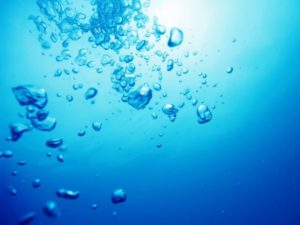
Researchers are offering different explanations for changing ocean oxygen concentrations rather than appreciating multiple causality. Credit: raiPR (CC0)
Peter Brewer / Eos May 14, 2018
Widespread declines in ocean oxygen concentrations are now being reported with authors offering quite different explanations. Which ones are correct? Researchers are offering different explanations for changing ocean oxygen concentrations rather than appreciating multiple causality.
Each day, journal editors, including the team at Journal of Geophysical Research: Oceans, make binary decisions with submitted articles—to publish, or to decline. So too do authors: faced with the need to have a tidy conclusion to a research paper, they tend to make a clear choice. But it isn’t always that easy, and nowhere is this made plainer than in the varying explanations offered for observations of changing ocean oxygen concentrations.
Clearly there are multiple processes at work, and different sub-disciplines tend to pick their favoritesIn a recent paper, Meier et al. [2018] report on changing oxygen concentrations in the deep waters of the Baltic Sea; they opt for the changing input of organic matter as the primary cause. But clearly there are multiple processes at work, and different sub-disciplines tend to pick their favorites all associated in some way with human impacts.
One group of researchers favors “stratification” as a cause—the tendency of climate warming of the upper ocean to restrict seasonal overturning and reduce the supply of new atmospheric oxygen. In practice there is as yet scant evidence for this in the modern ocean, but it is favored explanation for geochemical changes associated with the end of the last ice age.
Physical oceanographers, keenly aware of how sensitive their models are to changes in the wind field, tend to invoke changes in wind as the primary driver of changes in the ocean oxygen field.
Meanwhile, ocean chemists are aware of the fundamental power of temperature as the prime driver of chemical (and microbial) reaction rates, and, taking note of climate warming, show that strong correlations exist between observed rates and temperature.
All processes are proceeding simultaneously and we should not and cannot easily discriminateBut this is not a game of “Stone, Paper, Scissors” where one choice trumps the others. All processes are proceeding simultaneously and we should not and cannot easily discriminate. The Baltic Sea is one of the most rapidly warming bodies of sea water in the world, and thus carbon dioxide driven temperature effects are inevitably present. But so too are changing human populations and water usage. The challenge is to make useful predictions based on all these effects, and the observable expansion of oceanic “dead zones,” where oxygen concentrations drop below recognized critical thresholds, raises public concern with direct consequences for fisheries.
That the prediction problem is real was clearly illustrated in the reports from a 2016 meeting at the Royal Society [Shepherd et al., 2017] where it was reported that “Our current understanding of both the causes and consequences of reduced oxygen in the ocean, and our ability to represent them in models are therefore inadequate and the reasons for this remain unclear.”
Simple choices increasingly will not work. In brief, we do not have a tidy ocean, models and data trends do not agree, and this is a warning call where simple choices increasingly will not work.
Citation: Brewer, P. (2018), Multiple choices exist for changing ocean oxygen concentrations, Eos, 99, https://doi.org/10.1029/2018EO098367. Published on 14 May 2018.
https://eos.org/editors-vox/multiple-choices-exist-for-changing-ocean-oxygen-concentrations
